4. Microphone Selection
There are three main microphone types used for capturing guitar speakers: Dynamic, Condenser, and Ribbon microphones.
Dynamic microphones are usually tough and can handle high levels – which is great because a cranked-up tube amp can create an intense sound pressure. These mics don’t need phantom power and can often be found at reasonable prices. While most dynamic mics don’t entirely reproduce a guitar speaker’s frequency range neutrally, their unique tonality is often used by experienced sound engineers to shape the guitar sound. Classic dynamic mics like the Shure SM-57 or the Sennheiser MD-421 have been reliable for decades. Another popular choice, specifically designed for guitar speaker capture, is the Sennheiser E-906.
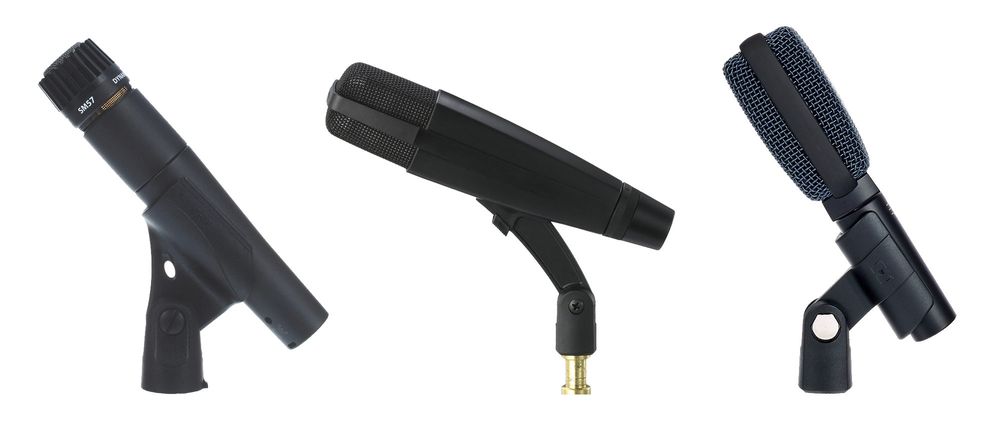
Item No. 105768 - Shure SM57 LC, Item No. 128331 - Sennheiser MD421-II, Item No. 178288 - Sennheiser E 906
Condenser microphones tend to have a more neutral frequency response but can be a bit sensitive to high sound levels. They also need power, supplied either through the microphone cable or a battery. Usually, audio interfaces, mixers, or microphone preamps provide phantom power, delivering voltage through the microphone cable. If not, dedicated external phantom power units can handle this task. On average, condenser mics are priced slightly higher than their dynamic counterparts, but they offer more versatility, for example, for vocals, acoustic guitar, or other instruments. If you plan on recording more than just electric guitars, a condenser microphone is often the more flexible solution. Neumann, a German manufacturer, produces high-quality mics typically found in the upper price range. The TLM-102 and TLM-103 models from Neumann offer excellent suitability for electric guitar recordings and are moderately priced.
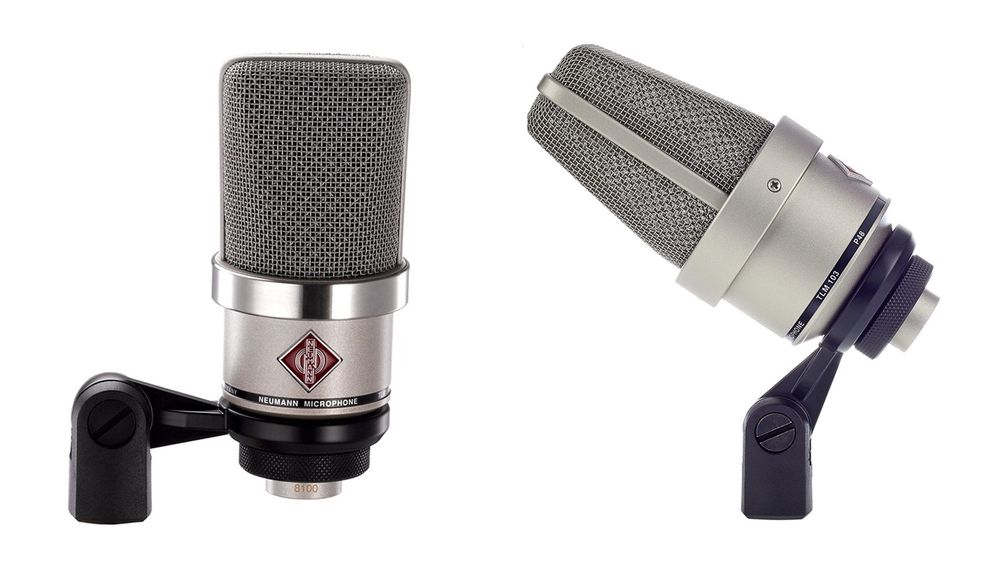
Item No. 237768 - Neumann TLM 102, Item No. 127970 - Neumann TLM 103
Ribbon microphones are the third type commonly used for capturing guitar speakers. These mics offer a warm sound, favored by many sound engineers for electric guitar recordings. Ribbons generate a slightly lower level than dynamic or condenser microphones, so your audio interface should provide a bit more gain without additional noise. They don’t have issues with high sound levels, and they also don’t require phantom power. However, be cautious not to accidentally activate phantom power on the preamp or audio interface, as this could damage ribbon mics. While dynamic and condenser mics typically have a cardioid pickup pattern, focusing on the sound directly in front of the membrane and rejecting sound from the sides and rear, ribbon mics often have a bidirectional pickup pattern, capturing sound from both in front and behind the microphone. This should be considered while setting up the recording. A room that doesn’t sound great acoustically won’t yield the best results with a bidirectional ribbon mic. Similar issues might arise in a practice room recording with a full band due to crossover sounds, as the ribbon mic captures a fair amount from other instruments. For this mic type, prices can sometimes be steep. The Royer Labs R-121 (bidirectional pattern) is state-of-the-art, while the Beyer Dynamic M160, much cheaper than the Royer, is one of the few ribbon mics that features a cardioid pattern. The T-Bone RB-500, RM-700, and RB-100 are considered by many sound engineers as hidden gems, delivering excellent performance at a very affordable price (all with a bidirectional pattern).
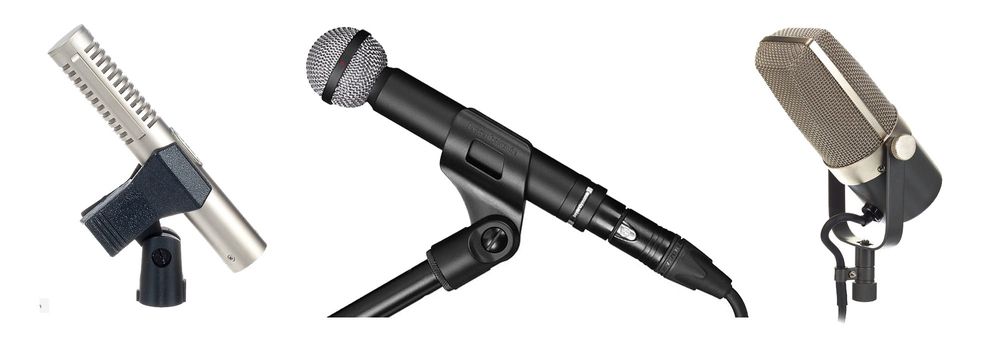
Item No. 136816 - Royer Labs R-121, Item No. 184042 - beyerdynamic M160, Item No. 172090 - the t.bone RB 500
What's better than one microphone? Two microphones!
Using two different microphones to capture a guitar speaker is a common practice. For instance, a dynamic mic like the SM-57 provides that sharpness in tone, while a ribbon mic contributes warmth. Depending on your preference, adjusting the volume of either signal component can be done. For an extra touch to the sound, many legendary recordings, even today, place one or two microphones (often condenser mics) further away from the speaker, typically between 1m and 4m, depending on taste. This preserves the amp's sound in the room, creating a somewhat three-dimensional sonic experience. However, this requires a well-sounding room that doesn't emphasize certain frequency ranges – an acoustically optimized recording space. Small rooms tend to amplify bass frequencies, especially with a cranked-up amp. Using room mics there might not yield the best results.
If multiple microphones are in use, there's another crucial detail to consider – phase.
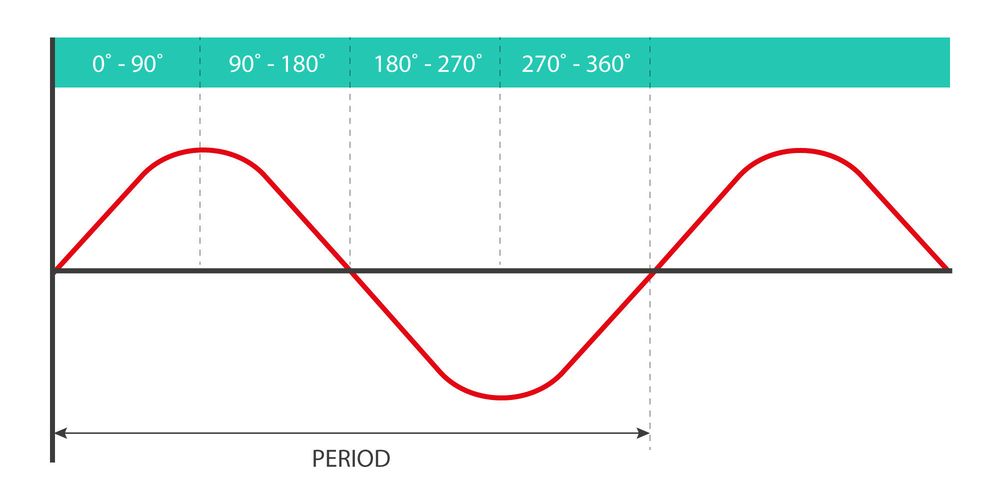
Phase
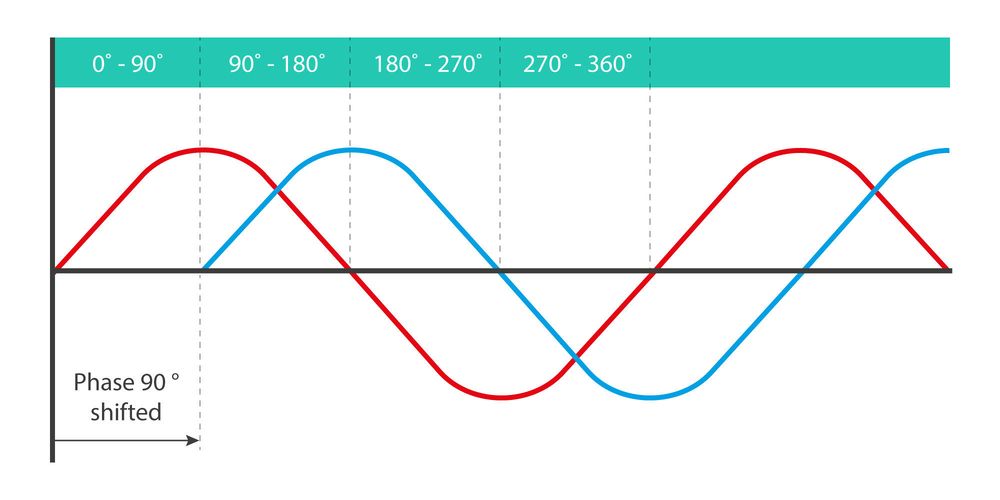
Phase Shift
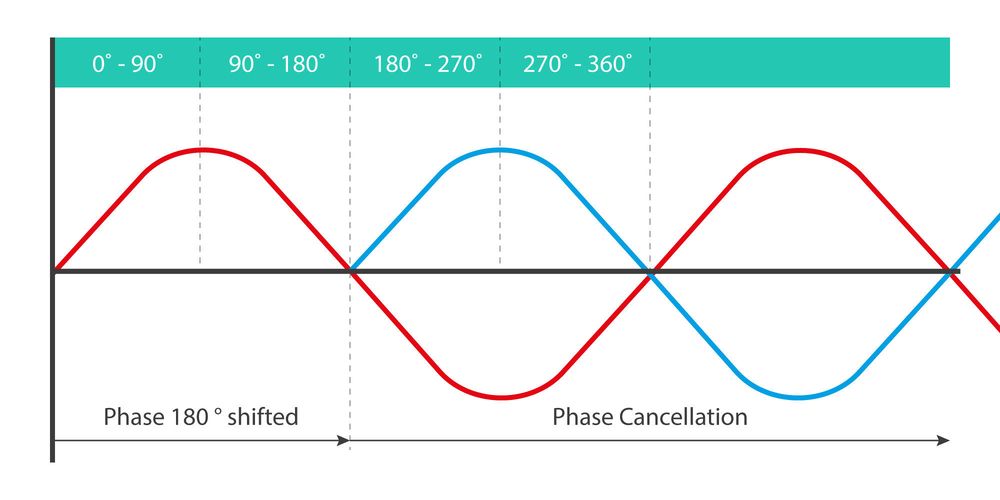
Phase Cancellation
Due to different distances between microphones and the sound source (guitar speaker), phase cancellations can occur, resulting in thin or hollow sound when mixing the recorded track from the second microphone. Therefore, you either need to position the microphones in a way that prevents phase cancellations or activate a phase reversal switch on the audio interface or in the DAW. It's not a big issue, but it's essential to keep an ear on this physical phenomenon.
To audibly demonstrate the sound differences between the three types of microphones, we recorded a Marshall Plexi with a 4x12 box using various microphones. It played the same riff with the same guitar settings.
Here are the results:
Dynamic Microphone: Shure SM-57
Dynamic Microphone: Beyer Dynamic MD-421
Condenser Microphone: Neumann TLM-103
Ribbon Microphone: Beyer Dynamic M160
Combination of SM-57 and M160
However, not only the microphone type determines the recording's quality, but another crucial detail, which we'll address in the next chapter.







